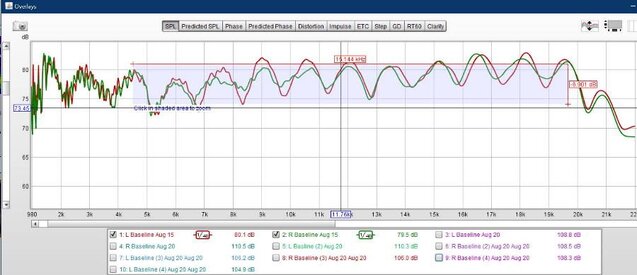Hello,
I need help with some issues I'm having measuring my room. I just downloaded the latest Beta Version of REW but previous versions did not yield proper results according to the GearSlutz forum members. I've documented everything here on Gearslutz under Studio Building/Acoustic. Thread title "Just Moved in! New Studio Build".

Basically, everytime I have done a measurement, the users who have tried assisting have told me that there are some issues with my readings. I'm following Soundman2020 Calibration tutorial for measurements.
Tried to attach the file but i guess it's too big. Here is a link to download:
 1drv.ms
1drv.ms
Gear I'm using:
- MacBook Pro Mid 2015 i7
- Sonarworks XREF 20 Measurement mic
- Komplete Audio 6 Soundcard
- Neuman KH120 reference monitors
Can someone please assist?
I need help with some issues I'm having measuring my room. I just downloaded the latest Beta Version of REW but previous versions did not yield proper results according to the GearSlutz forum members. I've documented everything here on Gearslutz under Studio Building/Acoustic. Thread title "Just Moved in! New Studio Build".

Just moved in! New Studio Build - Gearspace.com
Hello Everyone, Excited to be here as I begin my new journey in this newly rented apartment. Hope to us this post as a great learning experience for not only myself but others who may be in a similar situation. Up until moving into this new space (a small
www.gearslutz.com
Basically, everytime I have done a measurement, the users who have tried assisting have told me that there are some issues with my readings. I'm following Soundman2020 Calibration tutorial for measurements.
Tried to attach the file but i guess it's too big. Here is a link to download:
Microsoft OneDrive
Gear I'm using:
- MacBook Pro Mid 2015 i7
- Sonarworks XREF 20 Measurement mic
- Komplete Audio 6 Soundcard
- Neuman KH120 reference monitors
Can someone please assist?
Last edited:















